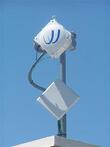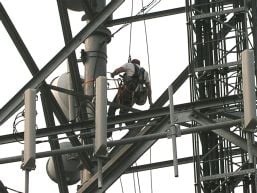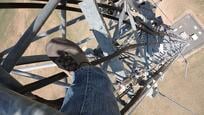The wireless backhaul industry is booming and not just because of the build out of 4G, like WiMax backhaul and LTE. Government agencies, utilities, and private industry are all realizing the benefit of point to point wireless backhaul, point to multipoint wireless bridges, and wireless mesh. Microwave communication, also known as fixed wireless backhaul, is a great network solution because of its quick ROI, high throughput speeds, quick deployments, extreme reliability, and as a wireless last mile solution the ability to get bandwidth where traditional cable and fiber infrastructure is not available.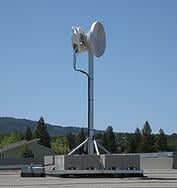 So how does someone that is not a wireless backhaul expert decide what the right wireless backhaul solution is and what wireless equipment to use? There are so many outdoor wireless vendors that claim their wireless hardware is the best. Who do you believe and how do you know you are getting the best solution? Whether a licensed microwave link or an unlicensed wireless Ethernet bridge, here are a few things that someone looking into a microwave communication solution should consider:
So how does someone that is not a wireless backhaul expert decide what the right wireless backhaul solution is and what wireless equipment to use? There are so many outdoor wireless vendors that claim their wireless hardware is the best. Who do you believe and how do you know you are getting the best solution? Whether a licensed microwave link or an unlicensed wireless Ethernet bridge, here are a few things that someone looking into a microwave communication solution should consider:
Hire a Good Outdoor Wireless Integrator
People that have deployed indoor Wi-Fi sometimes think that doing a wireless installation of an outdoor wireless backhaul is something they can do themselves. Understand that Wi-Fi is pretty easy to deploy indoors and is very forgiving. Outdoor wireless bridges are a whole other story. Outdoor wireless backhaul needs to be properly engineered. There are considerations about frequency coordination, spectrum analysis, Fresnel Zone criteria, multipath issue, signal propagation, EIRP regulations by the FCC, security, and so on. Hiring a good outdoor wireless integrator or wireless installer will ensure a successful wireless deployment. An outdoor wireless integrator can provide a proper wireless network design, perform a wireless sight survey, and help pick the right wireless hardware solution.
Understand the Solution Before Choosing the System
So many times an end user finds out that wireless backhaul might be a good solution to a networking need by a case study or white paper from a wireless manufacture. Naturally they may call the manufacture to get more information. That's where the issue starts. It becomes the particular wireless manufacture sales rep's job to fit their wireless radio system into the end user's solution, whether they are a good fit or not. The best approach it to fully understand what the wireless backhaul solution is first. Is it a point to point licensed microwave link or an unlicensed non line of sight wireless bridge that is right for the application? Once you understand what the right wireless solution is then you can look for various manufactures of that type of hardware.
Wireless Hardware Marketing Material Is Just Marketing
Marketing material is great to get an overview of a solution or piece of hardware. But understand that it's the job of a wireless manufacture to position their equipment as the best solution and sometimes the only solution. It most cases the toted performance of a wireless radio is based on optimum conditions and sometimes only achievable in a lab environment. Be sure before choosing a particular wireless backhaul platform to consult a good outdoor wireless installation VAR that works with multiple wireless manufactures and has personally installed the wireless hardware that can help decipher hype from reality.
Choose Proven and Field Tested Wireless Backhaul Systems
There is nothing better than getting positive feedback from a peer or other organization similar to yours on what type of outdoor wireless they have experienced and finding out what works and what doesn't. When you have done thousands of wireless installations you learn real quick what wireless equipment is good and what wireless systems are junk.
Know the Wireless Equipment You are Buying
There are so many outdoor wireless companies that come and go. Many wireless hardware platforms are not actually made by the so called wireless vendor. There are a handful of manufactures that OEM their wireless bridge equipment to other companies that put their label on it, change the graphics on the software and call it their own. The problem is who really knows the engineering behind the microwave radios and who can provide quality support for it. A lot of the wireless bridge equipment is cheaply made but allows for a so called wireless manufacture to make good profit margins without having any of their own R&D and testing costs.
Have a Professional Wireless Installer to Do It Right
Again, there are a lot of factors that go into a good reliable outdoor wireless backhaul system. A good wireless installer is worth their weight in gold. No matter how good the wireless hardware is, if it isn't installed properly you'll have issues (see "Outdoor Wireless Installation Done Properly").





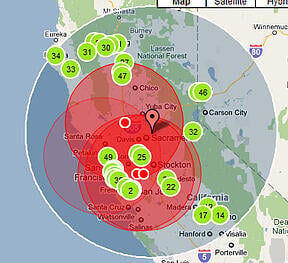
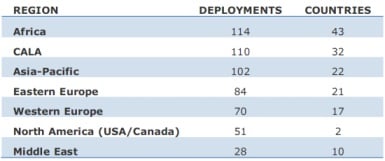
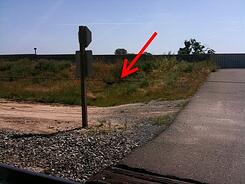
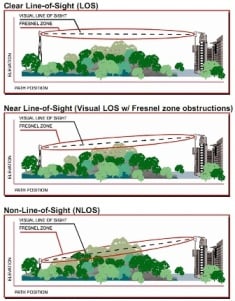
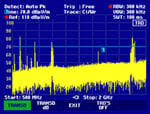
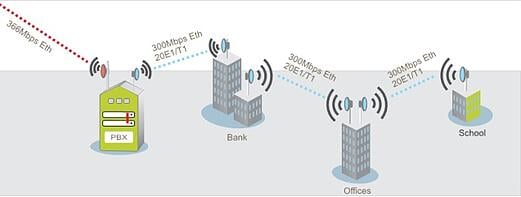

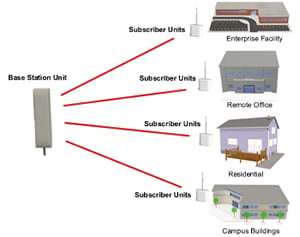 Point to multipoint wireless Ethernet bridge systems are made up of a Base Station Unit (BSU or AP) that can communicate with multiple Subscriber Units (SU's). Many systems can handle over 100 plus SU's per BSU. In most cases the BSU's provide a sector antenna beam pattern (typical is 60 degree, with some systems allowing external antenna configurations for expanding to 90 and 120 degree sector antennas). Multiple BSU's can be installed to create a 360 degree sector (like a typical cell site configuration).
Point to multipoint wireless Ethernet bridge systems are made up of a Base Station Unit (BSU or AP) that can communicate with multiple Subscriber Units (SU's). Many systems can handle over 100 plus SU's per BSU. In most cases the BSU's provide a sector antenna beam pattern (typical is 60 degree, with some systems allowing external antenna configurations for expanding to 90 and 120 degree sector antennas). Multiple BSU's can be installed to create a 360 degree sector (like a typical cell site configuration). 